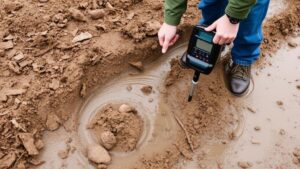How to Use Statistical Probability in Treasure Hunting Adventures
How to Use Statistical Probability in Treasure Hunting Adventures
Treasure hunting is often romanticized in popular culture, yet it is a serious endeavor that can be approached with analytical rigor. At the heart of many successful treasure hunting quests lies the application of statistical probability. This article explores how treasure hunters can leverage statistical principles and probability theory to enhance their chances of success in locating hidden treasures.
Understanding Statistical Probability
Statistical probability is a mathematical framework that quantifies the likelihood of certain outcomes occurring within a defined space of possibilities. In the context of treasure hunting, this means assessing the likelihood of discovering valuable items based on available data and underlying conditions.
For example, if an explorer analyzes the history of a region, including past treasure discoveries, the types of materials historically present, and environmental factors, they create a statistical model that can guide their search. A solid understanding of how to interpret these probabilities can significantly inform a treasure hunter’s strategies.
Data Collection and Analysis
Effective treasure hunting begins with meticulous data collection. This entails gathering historical records, local legends, geological surveys, and satellite imagery. For example, treasure hunters in Florida often study shipwrecks recorded in maritime databases, noting the locations and conditions of sunken vessels.
Building a Probability Model
Once sufficient data has been collected, treasure hunters can develop a probability model. This model might utilize techniques such as Bayesian inference, which updates the probability estimate for a hypothesis as more evidence becomes available. For example, if a treasure hunter learns of a new shipwreck discovered nearby, they can revise their original estimates based on the newly acquired information about treasure distributions and historical shipping routes.
Applying Geolocation Techniques
Geolocation is an integral part of modern treasure hunting, enabled by technologies such as GPS and GIS (Geographic Information Systems). By mapping data points, treasure hunters can visualize areas with higher probabilities of treasure presence. For example, a study published in the Journal of Coastal Research detailed a successful expedition where Bayesian models were employed to identify submerged shipwrecks in storm-prone areas.
Risk Assessment and Decision Making
Every treasure hunt comes with inherent risks, both financial and operational. Statistical probability assists hunters in assessing these risks. Tools such as Monte Carlo simulations can be utilized to simulate various scenarios based on different probabilities of discovering treasure, accounting for factors such as equipment failure or environmental hazards.
- Equip hunters to make informed decisions about where to allocate resources.
- Evaluate the potential returns against the costs involved in the search.
Real-World Applications
Numerous treasure hunters have successfully utilized statistical probability to locate treasures. A notable case was the Atocha, a Spanish galleon that sank in the Florida Keys in 1622. Using historical data and probability analysis, treasure hunter Mel Fisher spent years searching but eventually succeeded in finding $400 million worth of gold and silver.
Similarly, the use of sonar technology combined with statistical probability models in underwater explorations has led to new discoveries worldwide. research team that discovered the wreck of Titanic used advanced statistical tools to model potential debris fields based on ocean currents and geological formations.
Actionable Takeaways
To effectively integrate statistical probability into treasure hunting adventures, consider the following actionable strategies:
- Conduct thorough research to gather comprehensive historical and geographical data.
- Use statistical methods to develop models that assess treasure finding probabilities.
- Incorporate geolocation technologies for optimal planning and risk assessment.
- Continually refine your models as new data becomes available to enhance predictive accuracy.
By employing these strategies, treasure hunters can transform their adventures from mere chance into calculated pursuits, significantly enhancing the likelihood of discovery and enriching the experience of the hunt.


